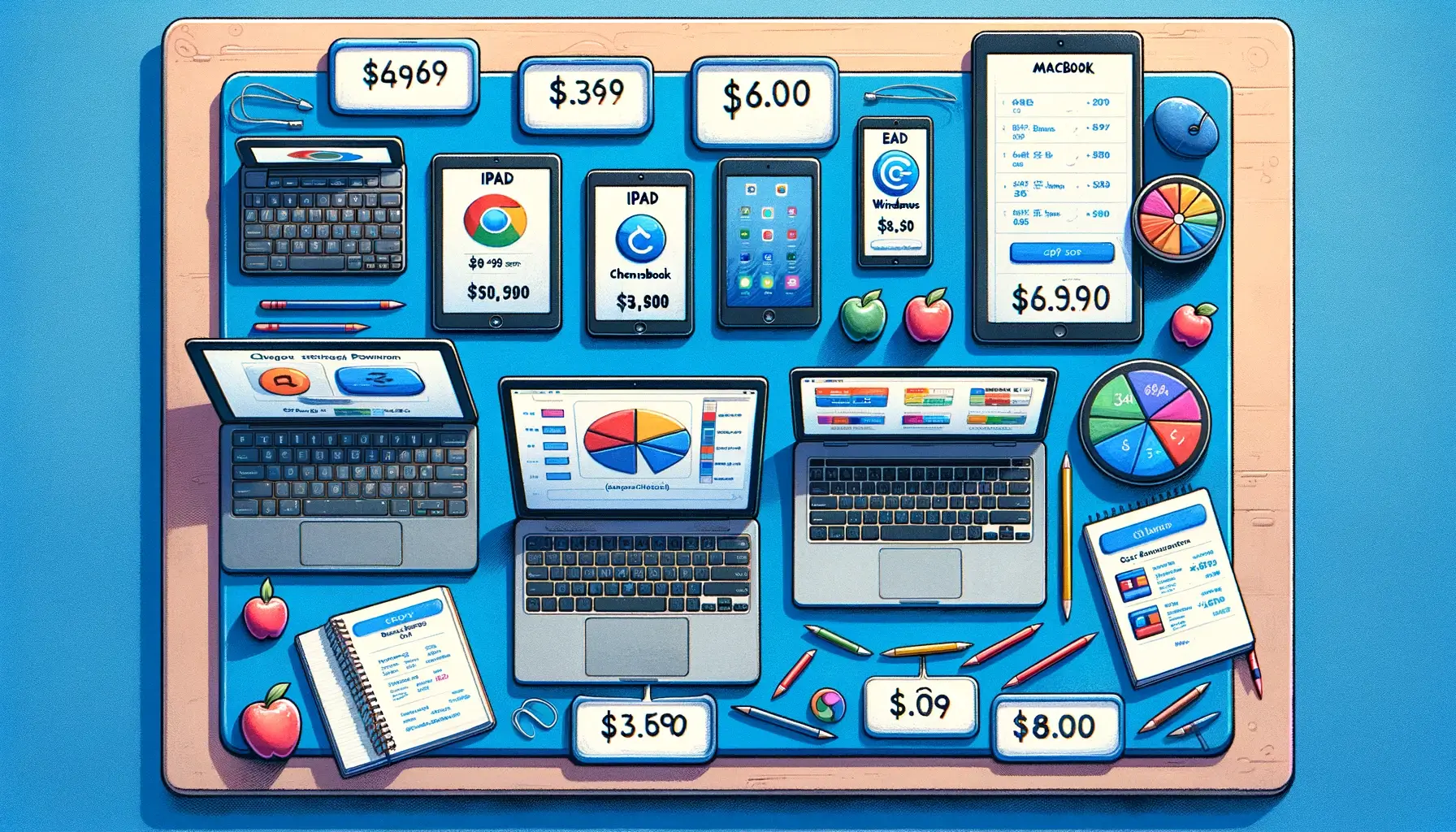Part 1: The Importance of a Refresh Cycle
Introduction: Maintaining a refresh cycle is crucial for the success of a 1:1 device deployment program in schools. With the expiration of ESSER funding, it’s more important than ever to have a strategic plan in place to ensure that devices remain functional and effective for student learning. This post will explore the costs associated with various device programs and how to manage these costs effectively.
Cost Comparison: One of the key factors in maintaining a refresh cycle is understanding the costs associated with different types of devices. Here’s a detailed breakdown of the average costs for running different device programs:
- iPad Program: iPads are known for their user-friendly interface and extensive app ecosystem, making them a favorite in many educational settings. However, the costs associated with these devices can add up.
- Average Cost: $400 – $600 per device
- Pros: Long battery life, extensive app support, strong performance
- Cons: Higher upfront cost, potential for higher repair costs. Repairs can be particularly challenging and expensive. Apple devices often require special contracts for repairs, and many issues cannot be fixed in-house, necessitating shipment to Apple service centers. This can lead to higher downtime and costs.
- Chromebook Program: Chromebooks are popular in many schools due to their affordability and integration with Google Workspace, providing a seamless experience for students and teachers.
- Average Cost: $200 – $300 per device
- Pros: Low cost, ease of management, good for web-based applications
- Cons: Limited offline capabilities, lower performance for high-end applications. While generally cheaper to repair, some models have non-replaceable parts, making certain repairs impractical.
- Windows Laptop Program: Windows laptops offer flexibility and compatibility with a wide range of software, making them a versatile choice for educational institutions.
- Average Cost: $300 – $500 per device
- Pros: Versatility, compatibility with educational software, robust performance
- Cons: Higher maintenance costs, potential for shorter battery life. Repairs can vary significantly depending on the manufacturer, but many Windows laptops offer easier access to replaceable parts, which can lower repair costs and downtime.
- MacBook Program: MacBooks are premium devices known for their durability and performance, but they come with a higher price tag.
- Average Cost: $900 – $1,200 per device
- Pros: Excellent build quality, long lifespan, high performance
- Cons: High upfront cost, expensive repairs. Similar to iPads, MacBooks often require special service contracts for repairs. Apple’s repair ecosystem is tightly controlled, leading to higher costs and potentially longer repair times.
Long-term Savings: Choosing the right device can lead to significant long-term savings. While the upfront cost is an important consideration, factors like durability, repair costs, and the device’s lifecycle also play a crucial role. For example, while MacBooks have a higher initial cost, their longer lifespan and lower frequency of repairs can make them a cost-effective choice over time. Conversely, while Chromebooks are cheaper initially, their shorter lifecycles and limited repair options might lead to higher overall costs in the long run.
Why Manage1to1: Manage1to1 can be a valuable tool in managing your refresh cycle. By keeping detailed records of device lifecycles, costs, and maintenance history, Manage1to1 helps you make informed decisions about when to replace or repair devices. This data-driven approach ensures that your refresh cycle is efficient and cost-effective. For example, Manage1to1 can track the total cost of ownership for each device, including purchase price, repair costs, and downtime, allowing you to identify the most cost-effective options for your district.
Implementing a structured refresh cycle is essential for maintaining the efficiency and effectiveness of a 1:1 device deployment program. By understanding the costs and benefits associated with different types of devices and leveraging tools like Manage1to1, school districts can make informed decisions that optimize their technology investments and ensure continuous support for student learning.
Part 2 Now Posted – Read Today!
Stay tuned for Part 2 of our series on “Managing a 1:1 Device Deployment Post-ESSER Funding.” In the next installment, we will dive into the importance of maintaining critical data for decision-making. Learn how to efficiently track check-in/out data, manage incidents, recover costs, and ensure proper insurance and accidental device coverage. We’ll also explore how Manage1to1 can help you organize this data to make informed, strategic decisions for your school district. Don’t miss it!

